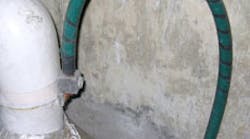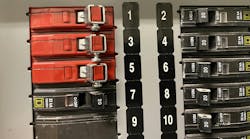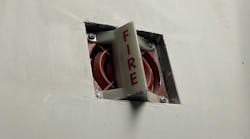How well do you know the Code? Think you can spot violations the original installer either ignored or couldn't identify? Here's your chance to moonlight as an electrical inspector and second-guess someone else's work from the safety of your living room or office. Joe Tedesco, who has a knack for finding shoddy electrical work, did the dirty work and found this mess. Now it's your turn to identify the violation.
Find the Answer
Answer
If you think you have this one figured out, you might be wrong. What once would have been a Code violation is now an acceptable installation. Per a change in the 2005 NEC, the requirements of 250.119 allow green to be used as a means of identifying the grounding electrode conductor (GEC). The exact wording is as follows:
“Unless required elsewhere in this Code, equipment grounding conductors shall be permitted to be bare, covered, or insulated. Individually covered or insulated equipment grounding conductors shall have a continuous outer finish that is either green or green with one or more yellow stripes except as permitted in this section. Conductors with insulation or individual covering that is green, green with one or more yellow stripes, or otherwise identified as permitted by this section shall not be used for ungrounded or grounded circuit conductors.”
In previous editions of the Code, the use of green was specified for the equipment-grounding conductor only.
An equipment-grounding conductor larger than 6 AWG must be installed per the requirements of 250.119(A)(1) and (A)(2). Part (1) requires you to permanently identify the equipment-grounding conductor at each end and at every point where the cable is accessible.
And what about the bonding of this grounding electrode conductor? Well, it’s missing in this installation, isn’t it? The bonding of the grounding electrode conductor to the raceway is only required when a ferrous conduit is used. Since this conductor is run in a ferrous conduit it must be bonded per the requirements of 250.64(E).
For a close-up of this picture, click here.




